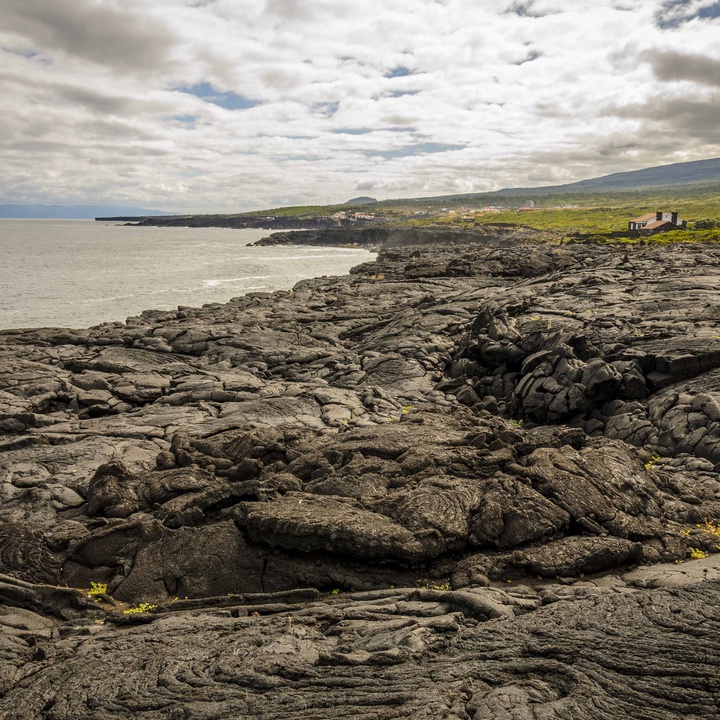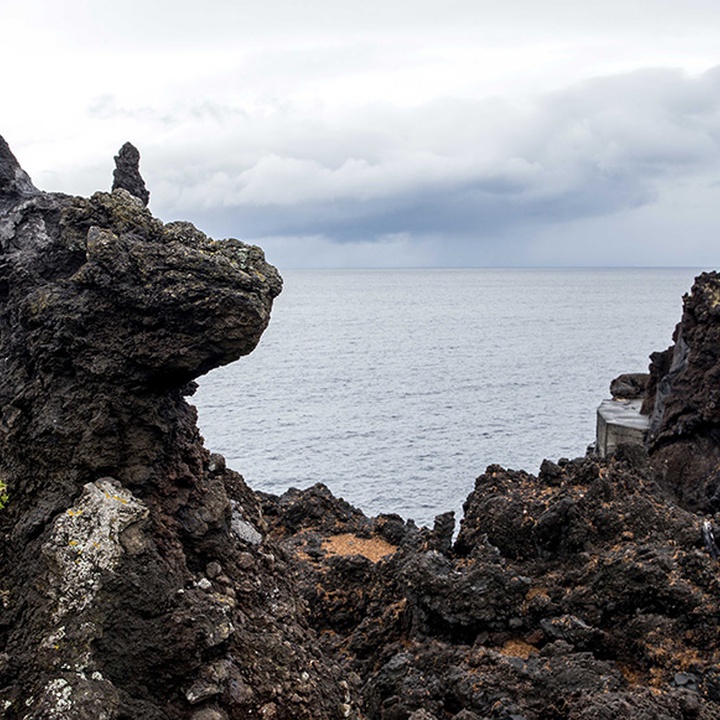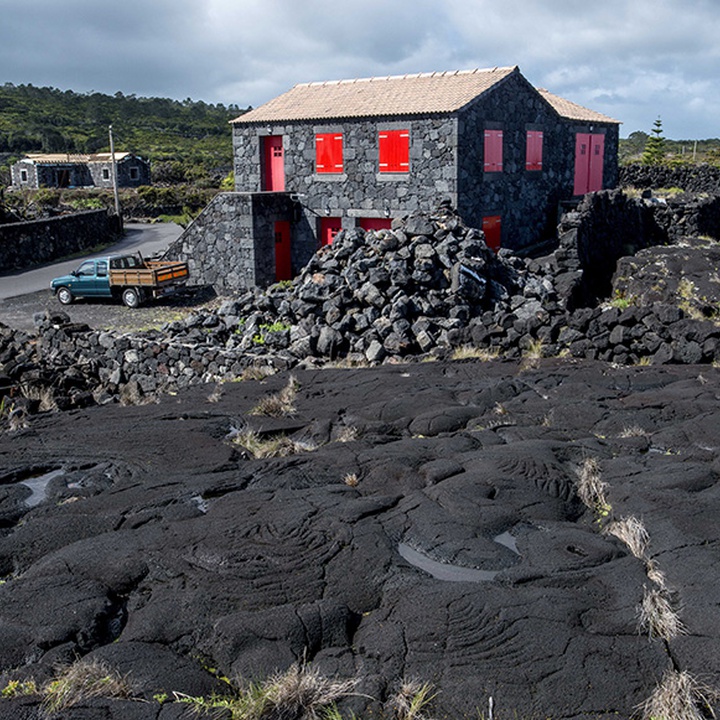Text size:
Cultura da Vinha - Zona Norte
Protected Landscape Area
Located on the northwest coast of Pico, this protected area occupies about 1747 hectares, covering from Sant’Ana (São Roque do Pico county) to Barca (Madalena county).
This area includes numerous built centres located along the coast: Sant’Ana, Cabrito, Arcos, Lajido, Cachorro, Cais do Mourato, Formosinha and Barca. Here, exist several elements related to the vineyard and fig culture: stone walls, wineries, distilleries, tidal wells, “rilheiras” (marks carved on the stone by the ox carts), “rola-pipas” (ramps carved on the rock, near the sea, which facilitated the transport of wine barrels to boats), small harbours and “descansadouros” (structures where the grape-harvesters could place the baskets filled with grapes that they carried on their head, enabling them to rest, and replace the baskets onto their head afterwards, without any help).
In this area, stands out the Lajido de Santa Luzia, an urban agglomerate classified as Landscape of the Pico Island Vineyard Culture – UNESCO World Heritage.
This “lajido”, so known due to the flattened and smooth morphology of the lava, is a field of basaltic lava flows, emitted mainly from the high zones of the Pico Mountain Volcano. Due to their fluidity and mobility, the lava flows moved for distances greater than 9 kilometres until they reached the sea. This landscape has several structures and microreliefs typical of effusive volcanism, like ropy lavas, tumuli and pressure ridges. It should also be mentioned the historical eruption of the “Mistério de Santa Luzia” that started on 2 February 1718 and which lava flows reached the sea at the “Cachorro” zone.
It is noticeable five lava fields with scientific and landscape interest: Cais do Mourato – Cachorro, Lajido – Arcos, Arcos – Cabrito, Cabrito and Baía do Gasparal.
In this area, the fig tree had greater cultural importance, which motivated varied types of plots, including circular, rectangular or quadrangular.
Regarding endemic flora, stands out the presence of Spergularia azorica, Festuca petraea and Azorina vidalii.
In terms of fauna, stand out the species Columba palumbus azorica, Turdus merula azorensis, Calonectris borealis and Nyctalus azoreum.
In this area, the Volcanoes’ House and Landscape of the Pico Island Vineyard Culture Interpretation Centre, places of promotion and interpretation of the existing natural and cultural elements, are available to visitors.
This area integrates an Important Bird and Biodiversity Area (IBA) of the BirdLife International organization and a geosite of the Azores UNESCO Global Geopark.





